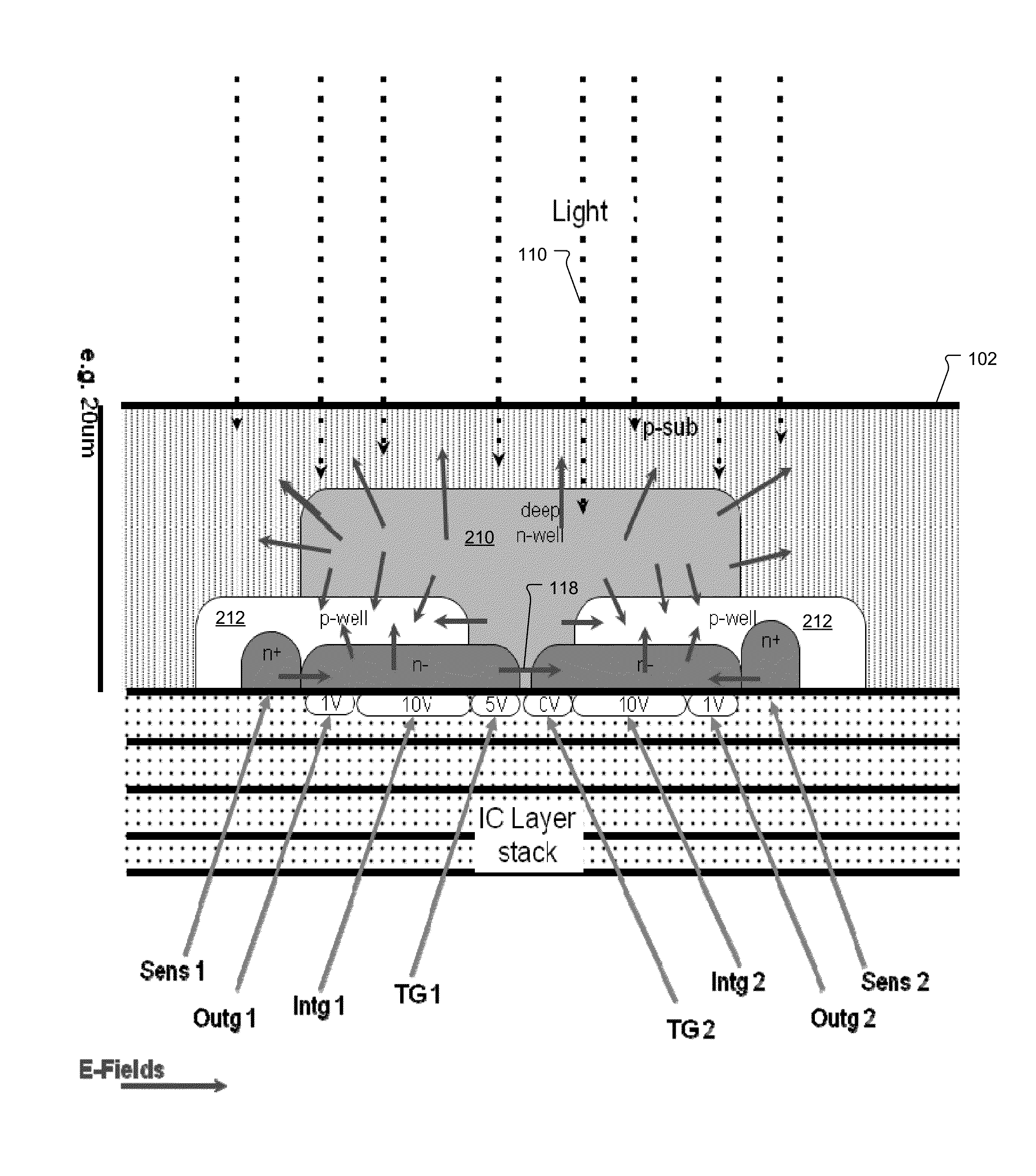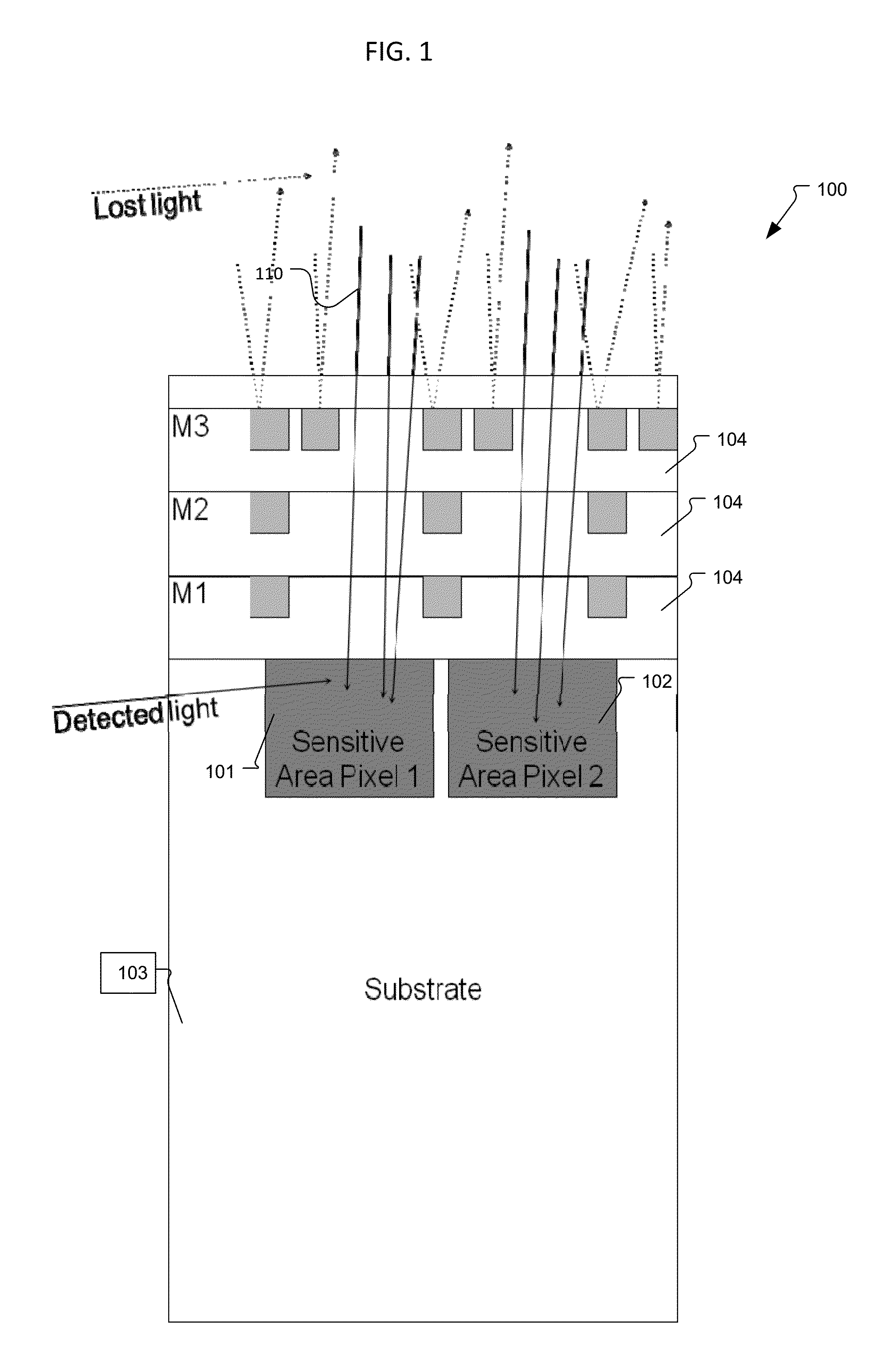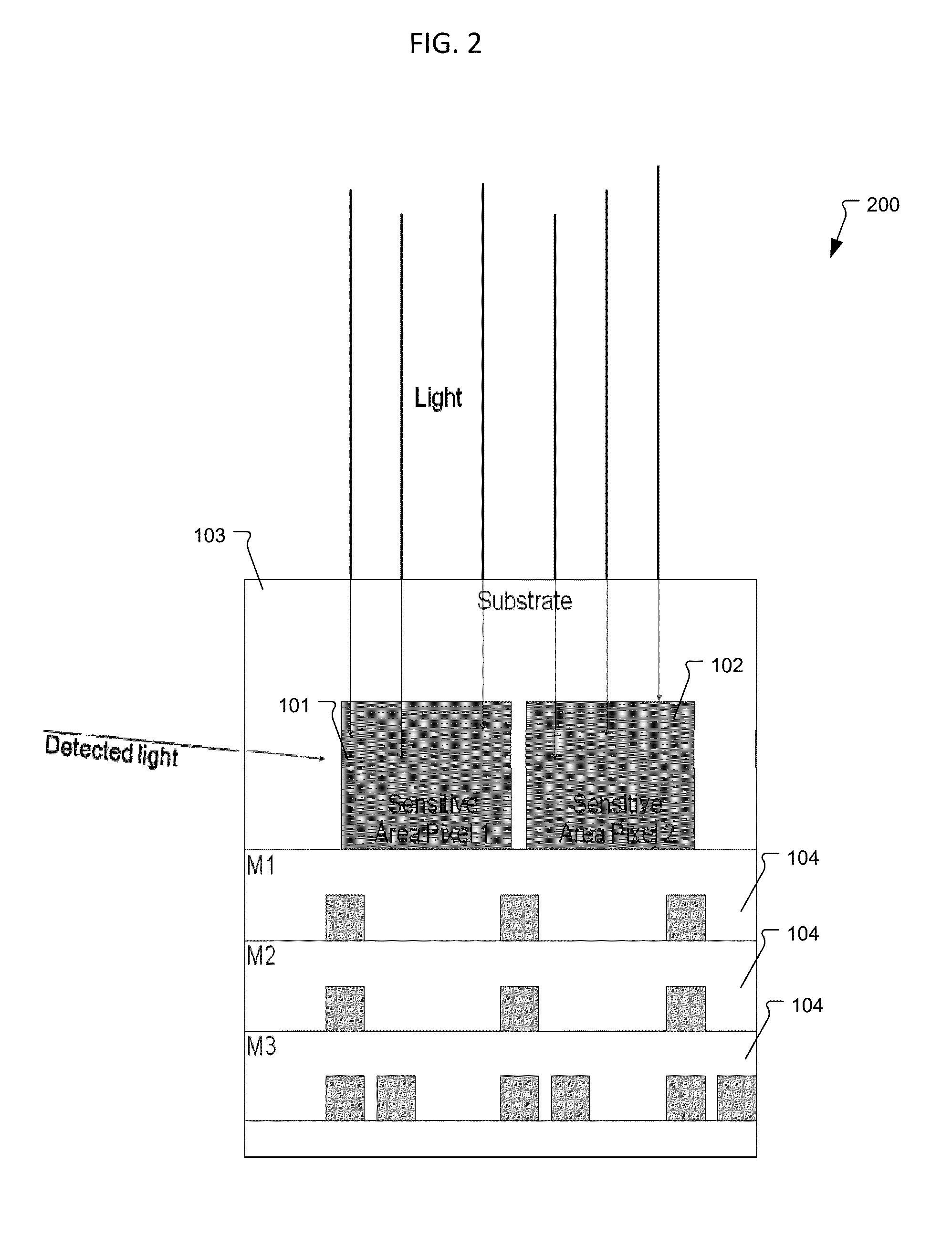Demodulation pixel with backside illumination and charge barrier
a backside illumination and charge barrier technology, applied in the direction of photoelectric discharge tubes, electrical apparatus, electric discharge tubes, etc., can solve the problems of limited use of micro-lenses, near-infra red (nir) photons penetrate deeper in the substrate, etc., and achieve the effect of increasing quantum efficiency
- Summary
- Abstract
- Description
- Claims
- Application Information
AI Technical Summary
Benefits of technology
Problems solved by technology
Method used
Image
Examples
Embodiment Construction
[0032]A drawback of state-of-the-art TOF pixels is that the pixels 101, 102 suffer from quite a low fill factor. This is mainly due to the electrical circuits required in the TOF pixel. A front side illuminated (FSI) sensor 100 with such a low fill factor is illustrated in FIG. 1. The metal layers 104 cover part of the pixel area and hinder the arriving photons 110 to reach the sensitive areas 101, 102.
[0033]FIG. 2 illustrates a back side illuminated (BSI) senor 200, which has increased fill factor since the effective are of the sensitive areas 101 and 102 is larger.
[0034]A second drawback of 3D TOF pixel is the aforementioned near-infra red (NIR) photon penetration in the silicon. While the demodulation generally takes place close to the front side of the silicon surface, the electrons need to be first of all detected deeply in the silicon and secondly transferred quickly to the corresponding storage node.
[0035]In FSI imager sensors, the depletion region usually reaches depths into...
PUM
 Login to View More
Login to View More Abstract
Description
Claims
Application Information
 Login to View More
Login to View More - R&D
- Intellectual Property
- Life Sciences
- Materials
- Tech Scout
- Unparalleled Data Quality
- Higher Quality Content
- 60% Fewer Hallucinations
Browse by: Latest US Patents, China's latest patents, Technical Efficacy Thesaurus, Application Domain, Technology Topic, Popular Technical Reports.
© 2025 PatSnap. All rights reserved.Legal|Privacy policy|Modern Slavery Act Transparency Statement|Sitemap|About US| Contact US: help@patsnap.com



